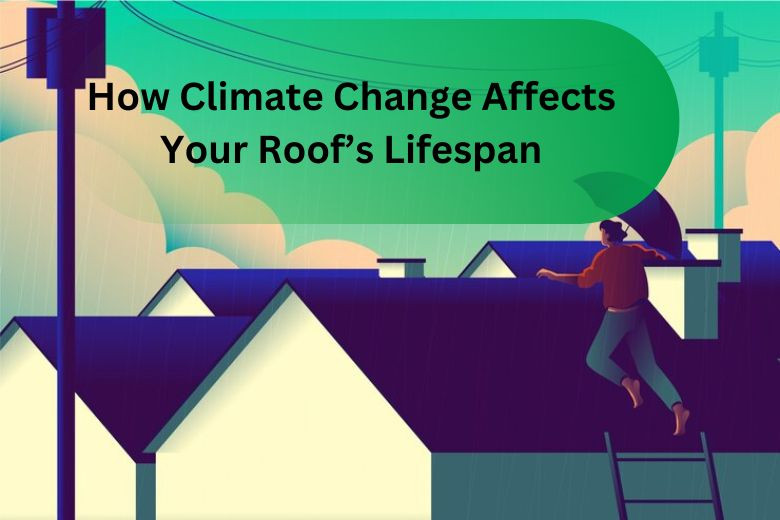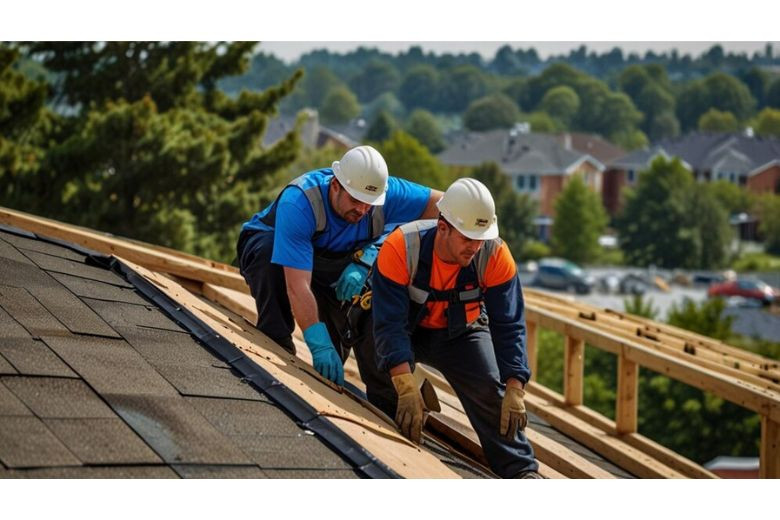How Climate Change Affects Your Roof’s Lifespan
Posted on September 23, 2024 by Admin

Climate change is rapidly becoming a problem that has seemingly affected almost every area of our lives, from the durability and long-term livelihood of our homes. One of the most usually overlooked areas is how climate change is affecting your roof's life. With these changing and unpredictable patterns in weather, it is important to understand these impacts in ensuring measures are put in place to protect the roofs and increase their lifespan.
Temperature Extremes
One of the major ways through which climate change impacts your roof's life span is through increased temperature extremes. This high temperature makes roofing materials expand and contract, predominantly asphalt shingles. Such constant thermal movement can easily bring about cracking, warping, and generally shortening a roof's life span. Moreover, such high heat hastens the deterioration of roofing materials, rendering them ineffective in providing protection to your house.
More Frequent and Intensive Storms
Storms, majorly hurricanes, tornadoes, and rainfall, have increased as a result of climate change and are now more frequent and heavier. Such weather can easily cause extensive damage to your roofing, torn-off shingles, and structural damage. This will be succeeded by heavy rain, which causes infiltration and eventually the leaking of water into the home interior following the lifting and flying over of roofing materials by strong winds. An increased frequency of such events exposes a roof to more wear and tear hence causing its reduced lifespan.
Higher Humidity and Moisture Levels
Another pathway through which serious wear on your roof's life expectancy happens is due to climate change, which increases the levels of humidity and moisture. Too much moisture could allow for mold, mildew, and algae growth on the roof surface. These microorganisms will bring about unsightly discolorations and, in addition, start decaying roofing materials. What's more, moisture penetrates into the wood structure of your roofing and begins to weaken it by rotting, thus badly weakening the integrity of the roof.
Temperature Changes and Freeze-Thaw Cycles
It is found that areas that experience more temperature fluctuation and freeze-thaw cycles will realize how climate change does impact your roof's lifetime. Water can get into tiny crevices within roofing material during winter. Water freezes, expands, and causes the crevices to grow in size when it gets cold. It is markedly known that this freezing and thawing process causes substantial damage to a roof, resulting in leaks or even structural damage.

Increased UV Radiation
The level of UV radiation is on the increase with depletion of the ozone layer and climatic change. Long-term UV radiation impacts greatly on roofing materials, specifically asphalt- and wood-based ones. UV radiation can cause embrittlement and discoloration of materials, hence reducing their effectiveness and shortening the lifespan of a roof.
Pre-Emptive Measures to Safeguard Your Roof
Knowing how climate change can affect your roof's life expectancy will help a homeowner to proactively take measures to mitigate these effects. What follows is how you can protect your roof:
1. Regular Inspections:
Make a habit of conducting frequent inspections to your roofing in order to detect problems early enough. Take notice of damaged conditions like cracks, missing shingles, and growth of molds.
2. Good Quality Materials:
See to it that you invest in something worthwhile. Good and solid roofing materials are those which can withstand any kind of harsh weather condition. Note those that provide UV protection and those which are not compatible with water.
3. Proper Ventilation:
Good ventilation is the path towards temperature control and prevention of buildup in moisture. Proper ventilation avoids expansion and contraction in roofing materials.
4. Maintenance:
Cleaning and integrity of the roof have to be taken care of. Debris removal from it, cleaning of gutters, trimming of overhanging tree branches are very significant in maintaining its integrity and for the free flow of water over it.
5. Engage Professionals:
Engaging professional Roofing Service Providers who understand the weather locally will help you get the right advice based on the local weather conditions.
Conclusion
From extreme temperature fluctuations to frequent storms and greater humidity, all combine to add to a larger UV radiation, adding up to a real, serious impact of climate change on the life of your roof. Knowing the extent of the impact that climate change has can arm a homeowner with an insight into ways to protect roofs and extend their lifespan. Proper care and attention mean frequent visits for inspection, proper ventilation, quality materials for your roofing, and frequent maintenance that really can reduce the impacts of climatic changes and safeguard your home from some unwanted situations.
Also Read :
The Benefits of Roof Inspections Before Buying a Home
How to Choose the Best Roofing Contractor
The Importance of Sump Pumps in Flood-Prone Areas
How to Install a Tankless Water Heater: Pros and Cons
The Benefits of a Home Plumbing Maintenance Plan
Roof Safety Tips for Homeowners
The Impact of Algae and Moss on Your Roof
How to Deal with Roof Leaks During a Storm
How to Create an Electrical Maintenance Plan for Your Home
Faqs
-
1. How does extreme heat affect my roofing?
Extreme heat has the expansion and contraction of roofing materials, thus causing cracks, warping, and degradation increasing, which shall considerably cut down its life.
-
2. What effect does frequent storms have on my roofing?
The violent winds of frequent storms cause appreciable damage, such as tearing off shingles, structural damages, and even cause water infiltrations, hence shortening your roof's life.
-
3. How does higher humidity impact my roof?
Higher humidity gives way to mold, mildew, and algae growth and degrades the roofing material, leading to damp-related problems like rot and leakages.
-
4. What are freeze-thaw cycles, and how do they affect my roof?
Freeze-thaw cycles follow this procedure: water infiltrates the fissures, freezes, expands, and eventually widens said cracks. This could cause enormous damage to the roof, thereby leading to leaks in a roof.
-
5. How will UV radiation affect my roof?
The continuous exposure to UV radiation tends to make the roofing material brittle, creates discoloration, and degrades the material's effectiveness, thereby shortening life expectancy.
Recent Post
- Top Plumbing Service Providers in Arizona, USA
- Top 10 Electrician Service Providers in Alabama, USA
- Top 20 Roof Repair Service Providers in Alabama, USA
- The Role of Roof Insulation in Energy Efficiency: Tips and Tricks
- Understanding Roof Damage from Wildlife and How to Prevent It
- How to Choose the Best Roofing Contractor for Emergency Repairs
- Roofing Maintenance for Historic Homes: Preserving Architectural Integrity
- The Importance of Proper Attic Ventilation for Roof Health
- How to Identify and Prevent Roof Mold and Mildew
- The Best Practices for Removing Snow from Your Roof